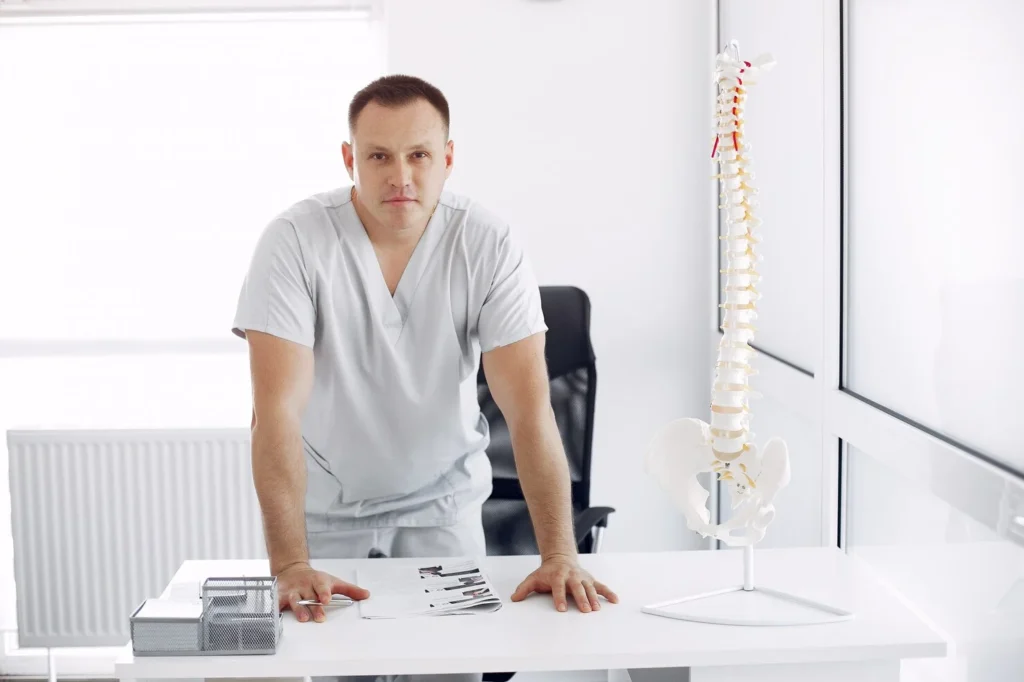Spinal compression fractures can be a real pain in the back—literally. They sneak up with age, often catching people by surprise. Imagine a tiny crack in one of your vertebrae, causing immense discomfort and limiting your ability to move freely. While these fractures can seem daunting, understanding them can be the first step towards relief. This blog post aims to shed light on what spinal compression fractures are, their causes, symptoms, and most importantly, the various treatment options available to manage and overcome them. Our goal is to provide you with practical information and hope that recovery is possible.
Understanding Spinal Compression Fractures
Before jumping into treatments, it’s essential to grasp what spinal compression fractures actually are. These fractures occur when one or more vertebrae in your spine collapse, leading to severe pain and sometimes a reduction in height or spinal deformity. They are often due to osteoporosis, a condition that weakens bones, making them fragile.
These fractures can significantly affect your quality of life. Everyday activities like walking, lifting, or even lying down can become painful challenges. It’s important to recognize these symptoms early to seek treatment promptly. While spinal compression fractures are more common among older adults, they can also result from trauma or cancer weakening the bones.
Recognizing Symptoms Early
Spotting a spinal compression fracture isn’t always straightforward. Many people assume their pain is just a part of aging, but recognizing specific symptoms can lead you to get help sooner. Common signs include sudden back pain, decreased mobility, and a hunched-over posture. You might also notice a loss of height over time. If you experience any of these symptoms, it’s crucial to consult a healthcare professional.
Early diagnosis can make a significant difference in managing the pain effectively. A timely response may also prevent further complications or damage. Don’t ignore persistent back pain or dismiss it as merely a sign of getting older without consulting a physician.
Causes Beyond Osteoporosis
Osteoporosis is the leading cause of spinal compression fractures, but it’s not the only one. Understanding the various causes can help in both prevention and treatment. Trauma, such as car accidents or falls, can lead to these fractures in people with strong bones. Additionally, certain cancers that metastasize to the spine weaken bones, making them susceptible to fractures.
Some lifestyle factors can also increase the risk of developing spinal compression fractures. Smoking, lack of exercise, and poor nutrition contribute to bone density loss, making fractures more likely. Awareness of these risk factors is key to taking preventive measures.
Non-Surgical Treatment Options
Thankfully, not all spinal compression fracture treatment require surgery. There are several non-surgical options available that can alleviate pain and promote healing. Pain management is often the first step; this can include medications like acetaminophen or nonsteroidal anti-inflammatory drugs (NSAIDs). Physical therapy is another crucial component, helping to strengthen back muscles and improve mobility.
Bracing is another method used to limit movement and allow the bone to heal naturally. A back brace can provide support and reduce discomfort during daily activities. Lifestyle changes, like diet and exercise adjustments, also play a significant role in recovery.
Surgical Solutions for Severe Cases
When non-surgical treatments aren’t enough, surgery may be considered. Vertebroplasty and kyphoplasty are two minimally invasive procedures that offer relief. Vertebroplasty involves injecting a special cement into the fractured bone, stabilizing it and relieving pain. Kyphoplasty goes a step further by first inflating a balloon in the fracture to restore height before filling it with cement.
These surgical options can significantly reduce pain and improve mobility, allowing patients to return to their daily activities. However, they aren’t suitable for everyone, and a thorough evaluation by a spine specialist is necessary to determine the best approach.
Rehabilitation and Recovery
Recovery from a spinal compression fracture doesn’t end with treatment. Rehabilitation is a vital part of the process to regain strength and functionality. Physical therapy exercises tailored to your condition can help rebuild muscle strength and improve posture. Regular follow-ups with your healthcare provider ensure your recovery is on track.
Patience is crucial during the recovery phase. Healing takes time, and while it may be frustrating, sticking to your treatment and rehabilitation plan is essential for a full recovery. Celebrate small milestones, as they are all steps towards regaining independence and mobility.
Preventive Measures for the Future
Prevention is always better than cure, and there are several steps you can take to reduce the risk of spinal compression fractures. Building and maintaining bone density through a calcium-rich diet and regular weight-bearing exercise is highly effective. Quitting smoking and reducing alcohol intake can also improve bone health.
Regular check-ups and bone density tests, especially for those over 50 or with a family history of osteoporosis, can catch potential issues early. Supplements like vitamin D can also support bone health, but always consult with your healthcare provider before starting any new regimen.
Importance of Early Detection
Detecting spinal compression fractures early can make a world of difference in treatment outcomes. Regular medical examinations and being mindful of changes in your body can lead to timely interventions. Early detection not only helps manage pain more effectively but also prevents further deterioration of the spine.
Understanding the importance of early detection empowers you to take proactive steps in maintaining spinal health. Encourage loved ones, especially older adults, to prioritize regular health screenings as well.
Living with Spinal Compression Fractures
While spinal compression fractures can be challenging, many individuals continue to lead active, fulfilling lives post-recovery. Adapting to a lifestyle that supports spinal health becomes second nature over time. Listening to your body’s signals and not overexerting yourself are key components of managing life with this condition.
Sharing experiences with support groups or communities can also provide emotional support and practical tips for coping. Remember, you’re not alone, and many have successfully managed and thrived despite their spinal challenges.
The Role of Technology in Treatment
Advancements in medical technology have revolutionized the treatment of spinal compression fractures. From diagnostic imaging to minimally invasive surgical techniques, technology plays a pivotal role in enhancing treatment outcomes. Staying informed about the latest developments can help you make educated decisions about your healthcare options.
Medical technology continues to evolve, offering new hope and possibilities for those dealing with spinal compression fractures. Engaging with your healthcare provider about these advancements ensures you receive the most current and effective care.
Conclusion
Spinal compression fractures may seem daunting, but understanding them is the first step towards reclaiming control of your spine health. With a variety of treatment options available, both surgical and non-surgical, relief is within reach. Early detection and proactive prevention can significantly improve outcomes and quality of life.
For those seeking personalized advice or further information on managing spinal health, consulting a specialist is always beneficial. Remember, spinal health is crucial, and taking steps today can lead to a pain-free tomorrow.







